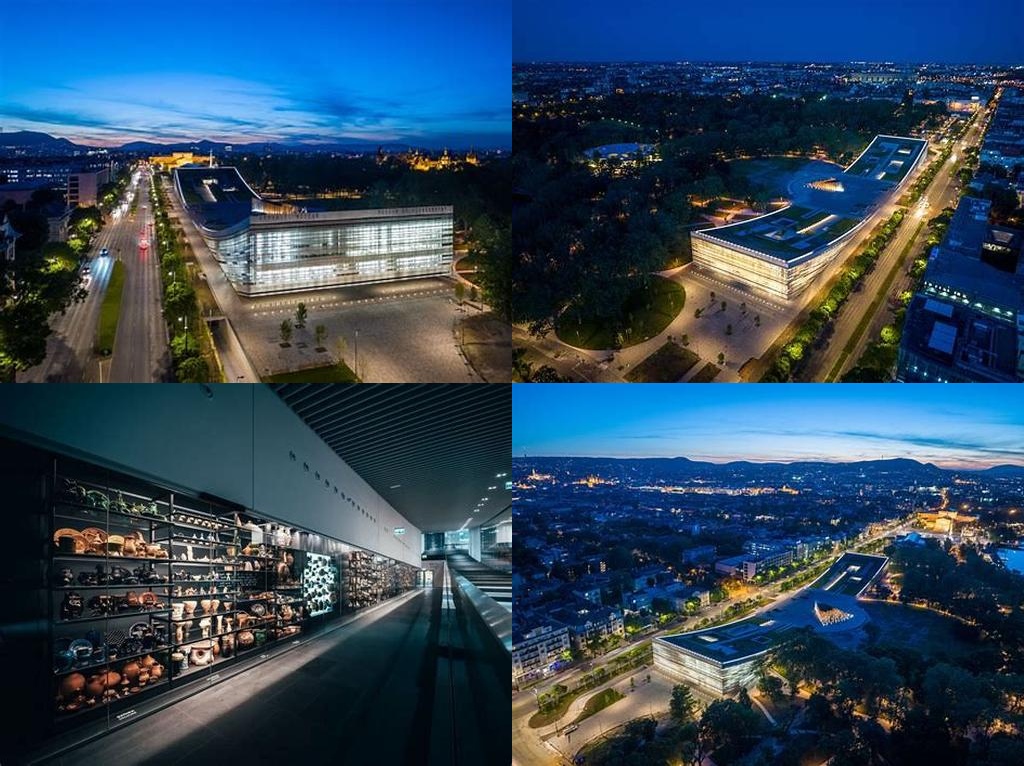
If you’re spending time in Budapest and fancy a museum experience a little outside the ordinary, the Néprajzi Múzeum (Museum of Ethnography) should absolutely be on your radar. This is not just another repository of old artifacts—it’s a vibrant, surprising monument to everyday life, creativity, and people, both in Hungary and around the globe. Housed since 2022 in a bold, architectural marvel right by Városliget (City Park), the museum immediately gives the sense that heritage is not only to be preserved, but to be lived, questioned, and reimagined.
Let’s start with the building, because you honestly can’t ignore it. Designed by the Hungarian firm NAPUR Architect and led by designer Marcel Ferencz, this new home for the collection looks like an enormous, grass-topped wave rolling up from the park. Don’t be fooled by the modern glass and steel—there’s a direct link here to deep tradition, with 7,000 stylized motifs from ethnographic objects worked into the decorative façade panels. Step inside, and sunlight streams in from every angle, washing over displays with a brightness that feels inviting rather than intimidating. Gone are the days of dusty vitrines and faded labels! Upon entering, you feel immediately that this is a living museum, not a mausoleum of dead things.
The museum’s roots go deep. It began, somewhat quietly, back in 1872 as part of the Hungarian National Museum when explorer János Xántus returned from his travels in the Americas with an extraordinary collection of objects, both poignant and puzzling. Within a couple of decades, the ethnographical collection grew until the Néprajzi Múzeum stood on its own. Since then it’s become one of the premier ethnographic museums in Europe, with collections chronicling not only the folk traditions of Hungary but also objects and tales gathered from every continent—over 200,000 objects in all.
The Hungarian materials, you’ll find, offer a generous, sometimes playful, sometimes soulful look into village life. Expect everything from mask-wearing busós of Mohács (seriously, the wooden masks are both charming and just a little disturbing), to intricate Kalocsa embroidery, ornate herdsmen’s pottery, and musical instruments you’ve probably never seen before. These are not static “showpieces”—the curators love to connect objects to the people who created, used, and treasured them. Through multimedia installations, oral histories, and even reconstructed interiors, the exhibits conjure up the textures of everyday Hungarian life—from wedding day to harvest, from cradle to grave.
But if you’re more globally minded, don’t skip the international halls. It’s here the museum’s ethos really shines. Whether it’s haunting masks from Papua New Guinea, Siberian shaman drums, Native American beadwork, or Japanese woodblock prints, you’ll see objects that present people neither as “exotic others” nor faceless masses, but as quirky, ingenious, living beings. Major appreciation for the way Néprajzi Múzeum is open about the complexities of collecting and displaying world cultures—there’s plenty here to make you stop and consider bigger questions about cultural identity, appropriation, and respect.
Of course, the details are great, too. There’s a cafe that looks out over green spaces, a shop filled with contemporary folk crafts, and rooftop gardens where you can take in stunning views of Pest and the beat of the city below. For families, interactive exhibits are thoughtfully designed to include kids, but even grown-ups will probably find themselves weaving felt, pressing snaps in a printing press, or trying out a zither. Temporary exhibitions, performances, and workshops keep things animated—so even if you’ve been before, there’s always something fresh to catch.
Above all, a trip to the Néprajzi Múzeum feels like a conversation between past and present, city and countryside, Hungary and the wider world. It’s the perfect place to pause, look closely, and understand a little more of what makes us all beautifully human. So next time you’re wandered out after Heroes’ Square, or want to put your finger on the pulse of Hungarian creativity, this is absolutely the spot to duck into for a few surprising—and downright delightful—hours.





